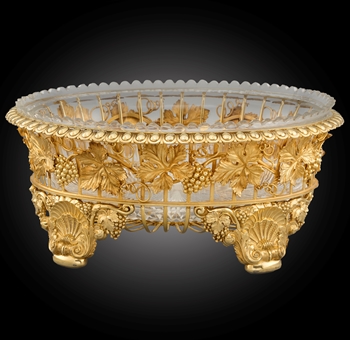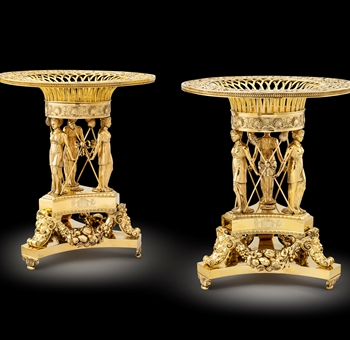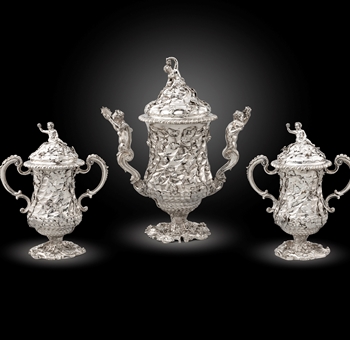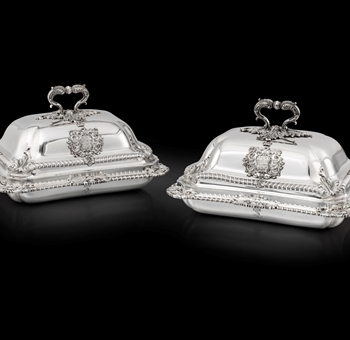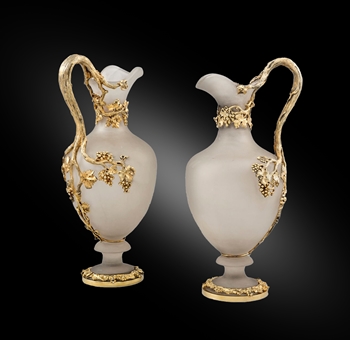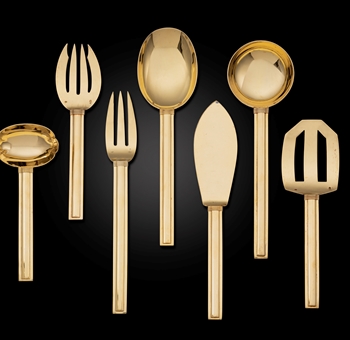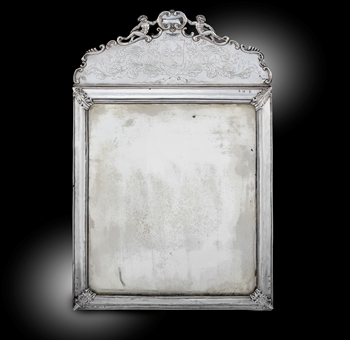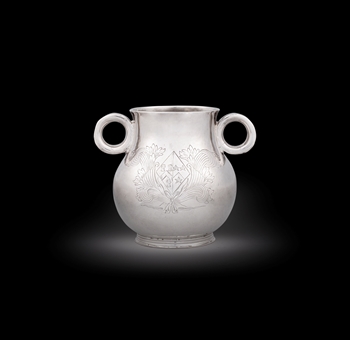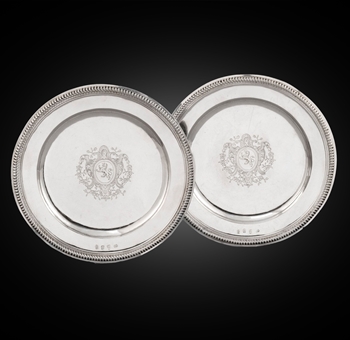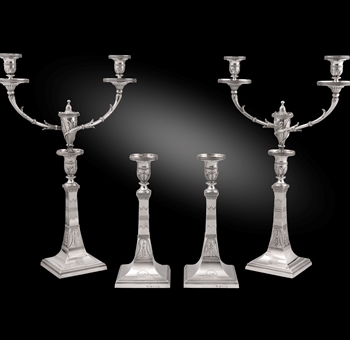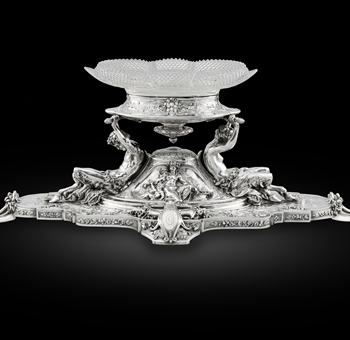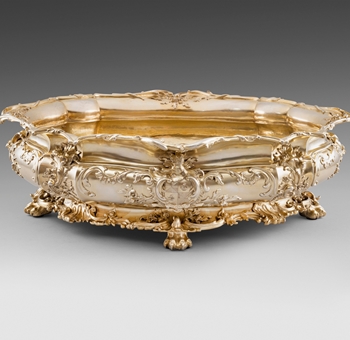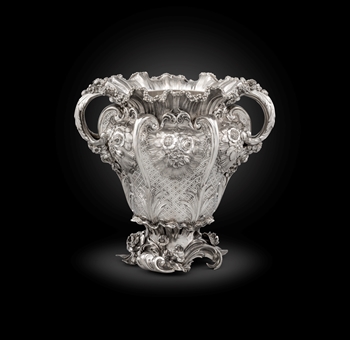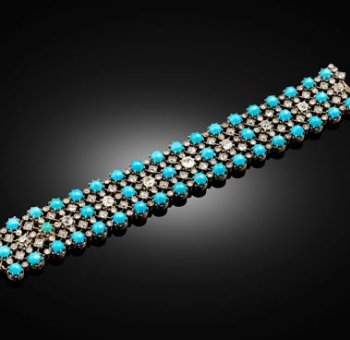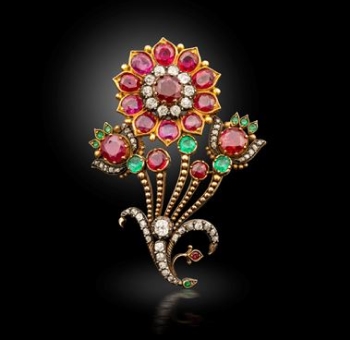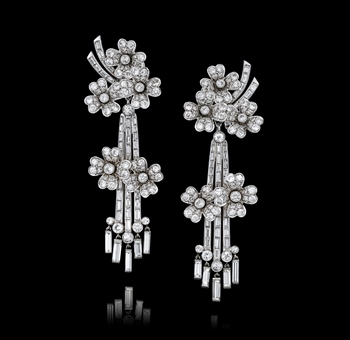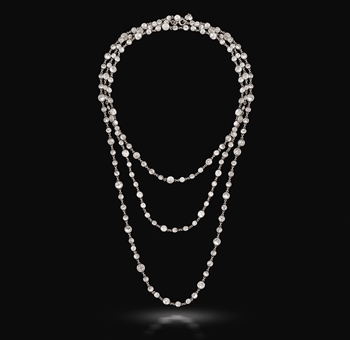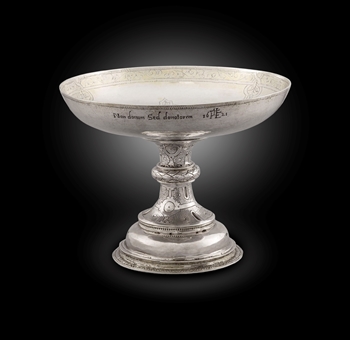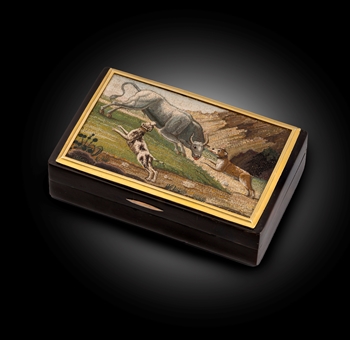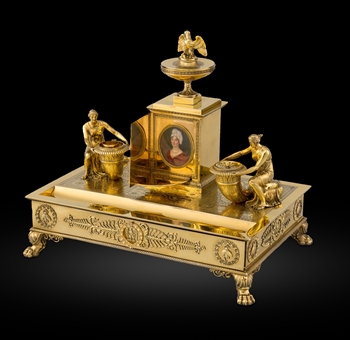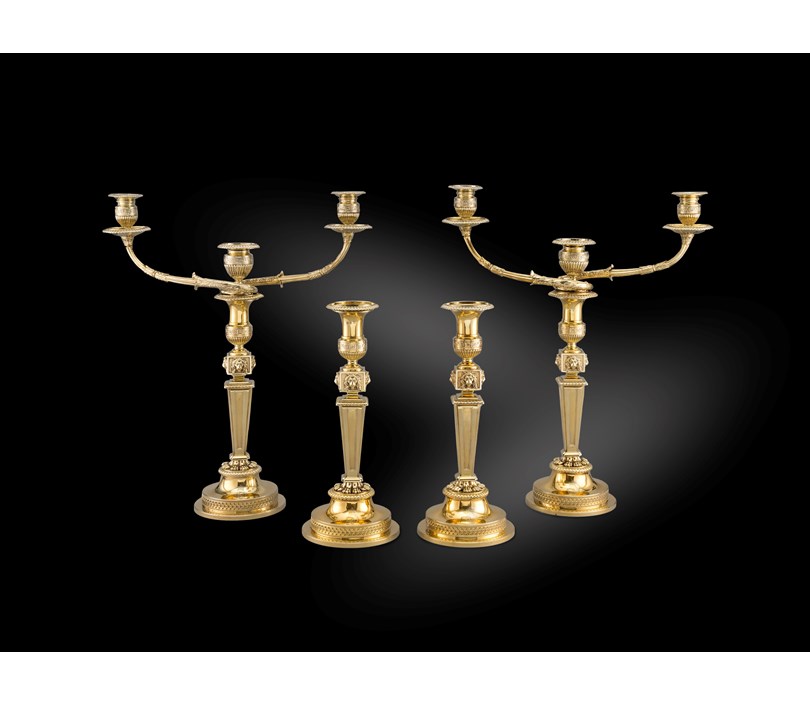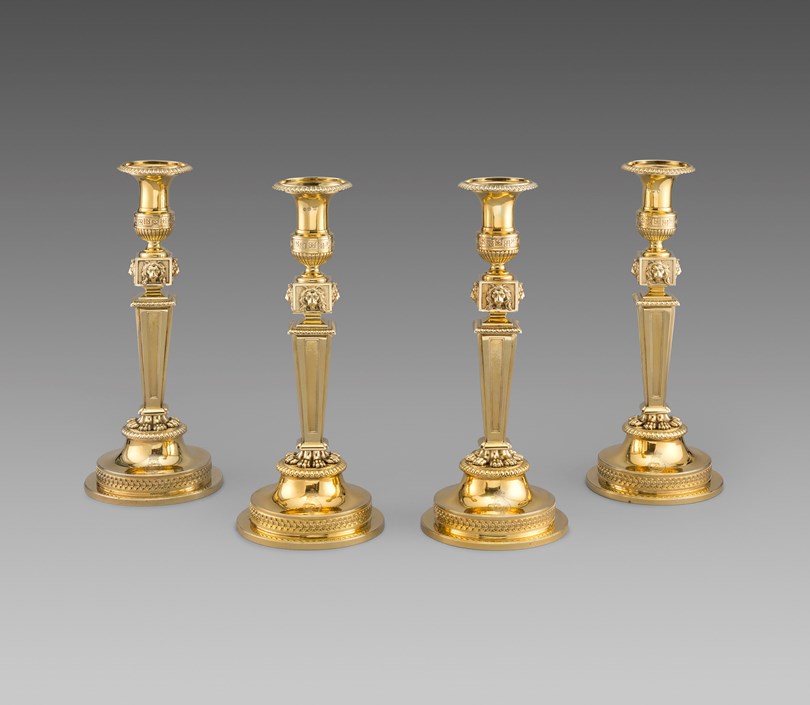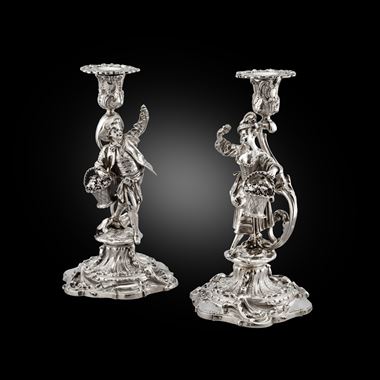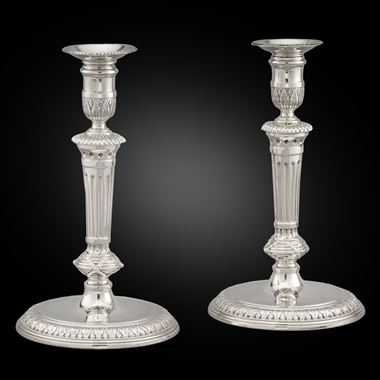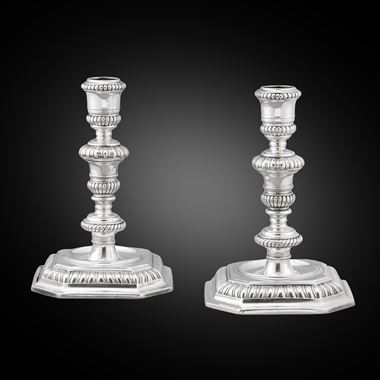The crest and coronet are those of Charles, 2nd Earl Talbot, who was born in 1777 and succeeded his father to the title in 1793. He was Lord Lieutenant of Staffordshire 1812-1849 and Lord Lieutenant of Ireland 1817-1821. It was during his term at Dublin that George IV paid his famous state visit to Ireland, in 1821. He was created a Knight of St. Patrick in 1821 and, in 1844, installed as a Knight of the Garter. Charles commissioned only the finest quality silver and was clearly a keen patron & client of Rundell, Bridge & Rundell as all the pieces that came from his services were of the very finest quality that the firm produced, and he spared no expense in the manufacture.
The design for these candlesticks appears to be based on French ormolu examples by Pierre Gouthière (1732-1813), the most celebrated doreur ciseleur of his time, maitre in 1758 and doreur ordinaire des Menus-Plaisirs in 1767.
Pierre Gouthière
Pierre Gouthière was trained by the gilder Francois Thomas Germain and perfected his style and technique of bronze. He later joined Boulle, Cressent and Riesener in the fan of the 19th century decorative art artists. Gouthière was a key figure of his era, as testified by the prestigious commissioners as Madame du Barry and the comte D’Artois, for whom he became the ciseleur-doreur. Other important commissions included those for the duc d’Aumont and the Duchesse Mazarin. It is worth mentioning that Gouthière name features in the sale catalogues produced during the 19th Century, which is an extremely rare occurrence.
The success of the model
A large variety of examples of this model are known: some of them features nozzles with Greek key-patterned friezes while others are decorated with entrelacs or with breté decoration. For instance, it is known that the comte de Saint- Florentin owned a similar pair with breté nozzles and then passed into the hands of madame Léger.
It was not unusual for Rundell Bridge & Rundell to use earlier designs for their pieces. However, a few scholars suggest that the original model might have been English, as a pair of English candlesticks of this model was acquired 11-13 April 1771 by the first Earl of Sefton at the sale of stock of Boulton and Fothergill (Walker Art Gallery, Liverpool). Boulton had come to Paris in 1765 and was show his designs to François-Thomas Germain. It is therefore possible that the model was taken up by Pierre Gouthière who was not able to sign his pieces doreur du roy until 1767, some two years after Boulton’s visit to Paris. However, is more likely that a pair of this model by Gouthiere was imported in England and then after copied by Boulton.
Son of Thomas Storr of Westminster, first silver-chaser later innkeeper, born 1771. Apprenticed c'1785. Before his first partnership with William Frisbee in 1792 he worked at Church Street, Soho, which was the address of Andrew Fogelberg. This is also the address at which Storr's first separate mark is also entered. First mark entered as plateworker, in partnership with William Frisbee, 2 May 1792. Address: 5 Cock Lane, Snow Hill. Second mark alone, 12 January 1793. Address: 30 Church Street, Soho. Third mark, 27 April 1793. Fourth 8 August 1794. Moved to 20 Air Street, 8 October 1796, (where Thomas Pitts had worked till 1793). Fifth mark, 29 November 1799. Sixth, 21 August 1807. Address 53 Dean Street, Soho. Seventh, 10 February 1808. Ninth, 21 October 1813. Tenth, 12 September 1817. Moved to Harrison Street, Gray's Inn Road, 4 March 1819, after severing his connection with Rundell, Bridge and Rundell. Eleventh mark, 2 September 1883. Address: 17 Harrison Street. Twelfth and last mark, 2 September 1833. Heal records him in partnership with Frisbee and alone at Cock Lane in 1792, and at the other addresses and dates above, except Harrison Street. Storr married in 1801, Elizabeth Susanna Beyer of the Saxon family of piano and organ builders of Compton Street, by whom he had ten children. He retired in 1838, to live in Hill House in Tooting. He died 18 March 1844 and is buried in Tooting Churchyard. His will, proved 3 April 1844, shows an estate of £3000. A memorial to him in Otely Church, Suffolk was put up by his son Francis the then incumbent of the parish. For full details of Storr's relationship with Rundell, Bridge and Rundell please see N.M. Penzer, 1954 or Royal Goldsmiths, The Art of Rundell and Bridge, 2005.
Storr's reputation rests on his mastery of the grandoise neo-Classical style developed in the Regency period. His early pieces up to about 1800 show restrained taste, although by 1797 he had produced the remarkable gold font for the Duke of Portland. Here, however the modelling of the classical figures must presumably have been the work of a professional sculptor, as yet unidentified, and many of the pieces produced by him for Rundell and Bridge in the Royal Collection must have sprung from designs commissioned by that firm rather than from his own invention. On the other hand, they still existed in his Harrison Street workshop, until destroyed in World War II, a group of Piranesi engravings of classical vases and monuments bearing his signature, presumably used as source material for designs. The massiveness of the best of his compositions is well shown in the fine urn of 1800 at Woborn Abbey, but the Theocritus Cup in the Royal Collection must be essentially ascribed to the restraint of its designer John Flaxman, while not denying to Storr its superb execution. Lord Spencer's ice pails of 1817 show similar quality. Not all Storr's work however was of classical inspiration. The candelabra of 1807 at Woburn derive from candlesticks by Paul Crespin of the George II period, formerly part of the Bedford Collection, and he attempted essays in floral rococo design from time to time, which tend to over-floridity. On occasions the excellence of his technical qualities was marred by a lack of good proportions, as in the chalices of the church plate of St Pancras, 1821. In spite of these small lapses there is no doubt that Storr rose to the demands made upon him as the author of more fine display plate than any other English goldsmith, including Paul De Lamerie, was ever called upon to produce.
You May Also Like




